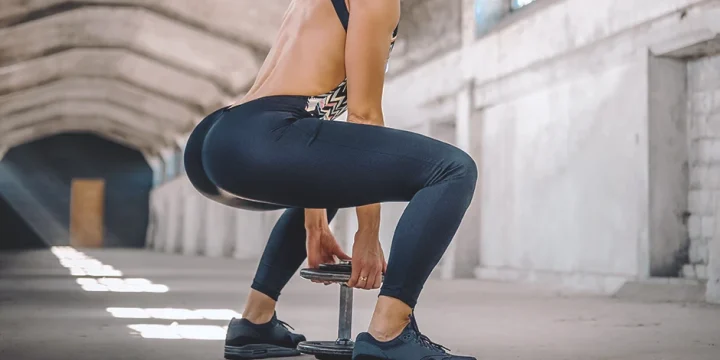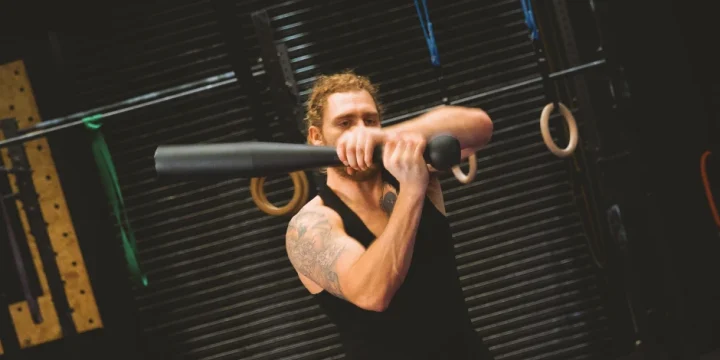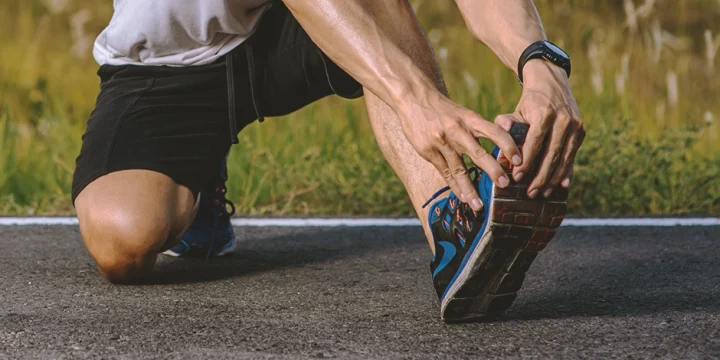I regularly encounter clients who struggle with many different types of lower body exercises due to limited ankle mobility.
It's a problem that can ultimately lead to a painful ankle injury, and many people simply think it’s an issue that will resolve itself by doing general leg exercises.
But improving both the strength and range of motion in your ankle joints requires a careful set of exercises, and on this page, we’ll help you with assessing ankle mobility and how to implement an effective routine.
Dr. Sondema N. Tarr of Direct Podiatry Arizona reminds us that an ankle that is mobile, and healthy, also decreases the risk of injury to other key joints in your foot – the main one being the subtalar joint, which sits just below the ankle.
Quick Summary
- The best ankle mobility stretches are ankle circles, toe drag, heel drop, ankle dorsiflexion, and massage rolling.
- To strengthen the muscles on your ankles, try out calf raises, single-leg lunges, toe walks, ankle jumps, and weighted ankle dorsiflexion.
- According to the Mayo Clinic, repeated minor ankle sprains can lead to stiff ankles due to the protective tightening of tendons, ligaments, and muscles, potentially resulting in further ankle joint injuries.
- In my professional opinion, consistently practicing ankle mobility exercises is key to preventing long-term joint issues and enhancing athletic performance.
How Do You Know You Have Poor Ankle Mobility?
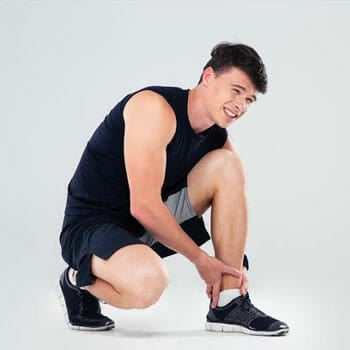
One of the main things I notice with clients at the gym is that they complain about sore ankles on leg days.
This can be due to heavy lifting, but also stretching of tendons and muscles that leave an ache.
A common sign of low ankle mobility is the inability to complete a squat without lifting the ankle.
While consulting a physical therapist is advisable, you can also conduct a simple home test for ankle mobility.
- Place the tip of your foot 5 inches from a wall in a half-kneeling position.
- Lean your knee towards the wall while keeping your heel grounded.
- If your heel lifts before touching the wall, it indicates a limited dorsiflexion range of motion, a finding supported by research from Mike Reinold [1].
What Causes Poor Ankle Mobility?

The causes of poor ankle mobility include previous injuries, which often limit ankle dorsiflexion range and lead to general ankle weakness.
In my experience as a fitness coach, I've seen how these injuries disrupt the kinetic chain, impacting not just the ankle but also knee and hip alignment.
This demonstrates our musculoskeletal system's interconnectedness.
Minor sprains, even without severe fractures or torn ligaments, can accumulate, causing stiff ankles. The tendons, ligaments, and muscles tighten for protection, increasing the risk of further injuries, as shown by the Mayo Clinic [2].
However, a combination of targeted stretches and strengthening exercises can effectively reverse these issues and enhance ankle mobility, which is especially crucial for athletes.
What Are The Benefits Of More Ankle Mobility?

I met up with a physiotherapist that I regularly work with for clients, and he identified three main areas where ankle mobility is important for athletes.
1. Reduced Injury Risk
With an increased range of motion in the ankle joint, sudden movements or a loss of footing when running or playing sports are less likely to result in injuries.
When you have limited ankle dorsiflexion, the ligaments and tendon will be very stiff. Any sudden stretch in them can then lead to tears, which, in severe cases, will require surgery.
Moreover, enhanced ankle mobility can contribute to better overall posture and alignment, reducing the risk of compensatory injuries elsewhere in the body.
2. Improved Running Gait

When you put in the effort to improve ankle dorsiflexion, you’ll also find that your walking and running gait improves.
You’ll have a lot more flexibility to adjust your foot movement to give you the ideal type of ground contact.
The result will be significantly less lower leg fatigue.
3. Stronger Squat Movement
Any bodybuilder that I work with who struggles to maintain strong footing during a standard squat will have to do a regular ankle mobility exercise.
If you can lower your butt all the way down and never lift your heels off the ground, you’ll gain a lot more stability and confidence in being able to securely push yourself back up again.
“Ankle injuries are often thought of as sports injuries. But you don't have to be an athlete or even a "weekend warrior" to turn your ankle and hurt it. Something as simple as walking on an uneven surface can cause a painful, debilitating sprain.”
- WebMD.com
How Can You Improve Your Ankle Dorsiflexion Mobility?

You can improve your ankle mobility by training your calf muscles, ligaments, and tendons.
And there are two things you need to do on a regular basis.
First of all, you’ll need to do some regular stretching exercises to loosen the calf and Achilles tendon.
Secondly, you’ll need to focus on strengthening the muscles in your lower leg to better support and protect the joint.
Incorporating foods rich in omega-3 fatty acids, calcium, and vitamin D into your diet can also support joint health, aiding in the improvement of ankle mobility.
Related: Best Mobility Exercises to Increase Your Range of Motion
Let’s take a look at some ankle mobility exercises that I get my clients to do.
Stretching Exercises
The most important ankle mobility exercises should always start with stretching the joints to improve the range of motion.
I find that if you start with strengthening, then you could end up tightening the ankle range more.
Here are five simple exercises to get you started.
Learn More: Best Stretches For Flexibility: Gain More Range Of Motion
1. Ankle Circles
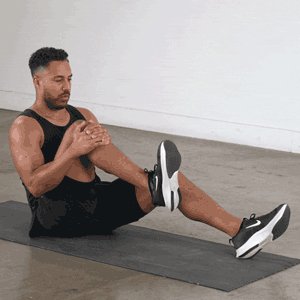
All you need is two chairs and a few minutes.
You could even do this at the office while you’re on a conference call.
Simply elevate one leg so that your foot isn’t resting on the chair.
Then rotate your ankle in a circular motion, both clockwise and anticlockwise, for about two minutes.
2. Toe Drag
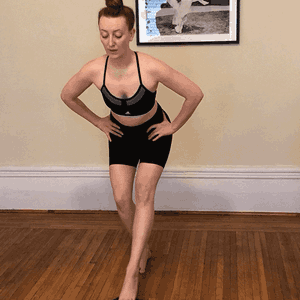
Stand up straight and place the tips of your toes of your left foot behind you with your leg straight.
Now, slowly drag the toes forward to feel the stretch along the front of your lower leg.
Repeat this about ten times on each foot.
3. Ankle Dorsiflexion

You’ll need a box that’s about a foot high and stable enough to support your weight.
Put one foot on the box and the other about one step behind it.
Then lower your body down until your forward knee is at a right angle.
Now it’s time to push your body forward to increase the ankle stretch.
You might also find this works well for hip mobility.
4. Heel Drop
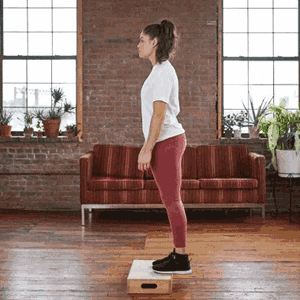
You can use the same box from the previous exercise and stand on the edge of it so that only the balls of your feet and toes are on the box.
Then let your heels slowly dip down for strong static stretching in the calves.
5. Massage Rolling

This is technically not a stretching exercise, but using a foam roller both on the front and back of your calves will ease a lot of tension in the soft tissue.
I would recommend this as a way to finish off your stretching routine.
Strength Exercises
Now let's look at some ankle mobility drills to build up some strength in the surrounding muscles of your ankles.
1. Single-Leg Lunge
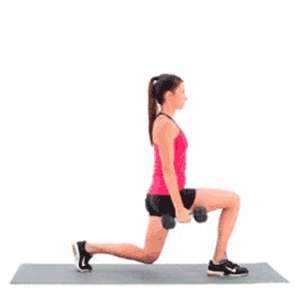
The first ankle mobility drill I would suggest is to stand on one leg and then slowly go down into a lunge.
If you struggle with balance or strength, then adjust this exercise into a walking lunge with one foot forward before lowering your body. Repeat this 20 times for each leg.
2. Calf Raises
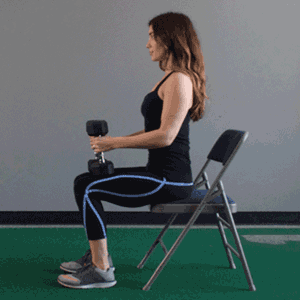
Grab a couple of dumbbells, and then simply push yourself off the ground by lifting your heels up as far as possible.
You can also adjust the impact of calf raises by pointing your big toe inwards or outwards and allow different muscles to take on most of the work.
3. Weighted Ankle Dorsiflexion
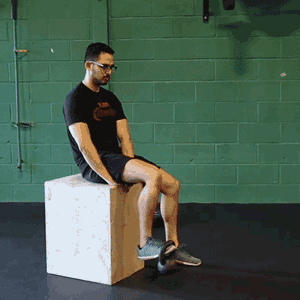
Another great way to improve ankle mobility is to attach an ankle weight strap to the front of your foot.
Simply raise the foot off the ground and flex the ankle up and down 20 times before switching to the other leg.
4. Ankle-hops

This can feel a bit strange, but what you do is try to jump while keeping each knee straight.
You’ll probably have to bend it just a little, but the idea is to make the calves do the majority of the work to get you airborne.
5. Toe Walk
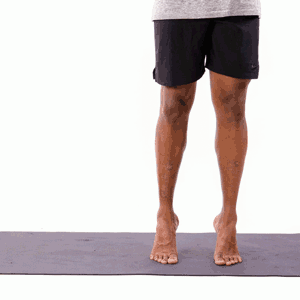
Finally, pick a distance at the gym or your home and walk it with small steps while remaining on your toes.
You can even use some dumbbells to add more strain around the anterior ankle.
Related Articles:
FAQs
How Do You Loosen Tight Ankles?
You loosen tight ankles by regularly doing stretching routines.
The muscles, ligaments, and tendons [3] around the ankle joint are easy to stretch, and you can do simple exercises while sitting at a desk.
What Can You Do for Weak Ankles?
You can add a few simple strengthening exercises for weak ankles.
By targeting the lower leg muscles, you’ll ensure that you don’t risk an ankle sprain while at the same time improving ankle mobility.
References:
- https://mikereinold.com/ankle-mobility-exercises-to-improve-dorsiflexion/
- https://www.mayoclinic.org/diseases-conditions/sprained-ankle/symptoms-causes/syc-20353225
About The Author
You May Also Like
